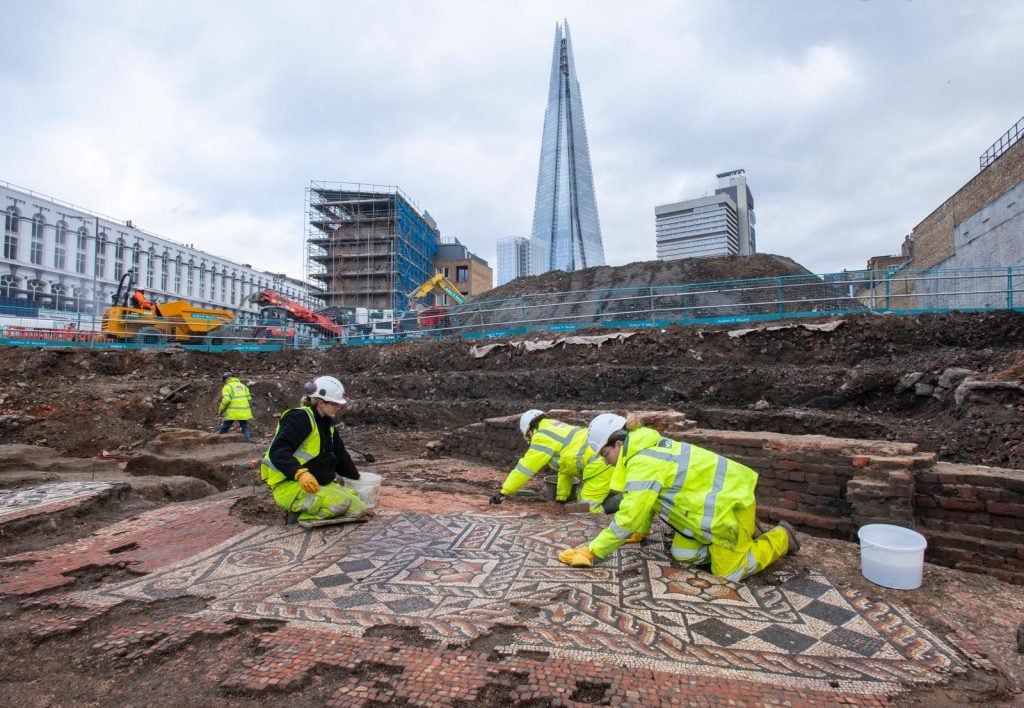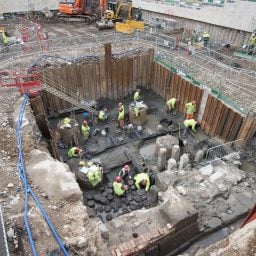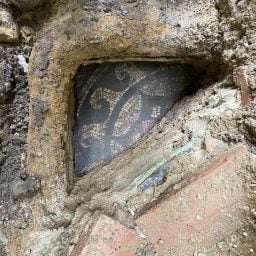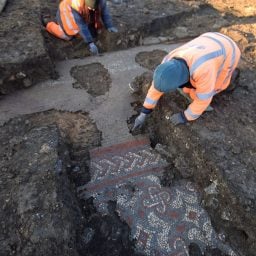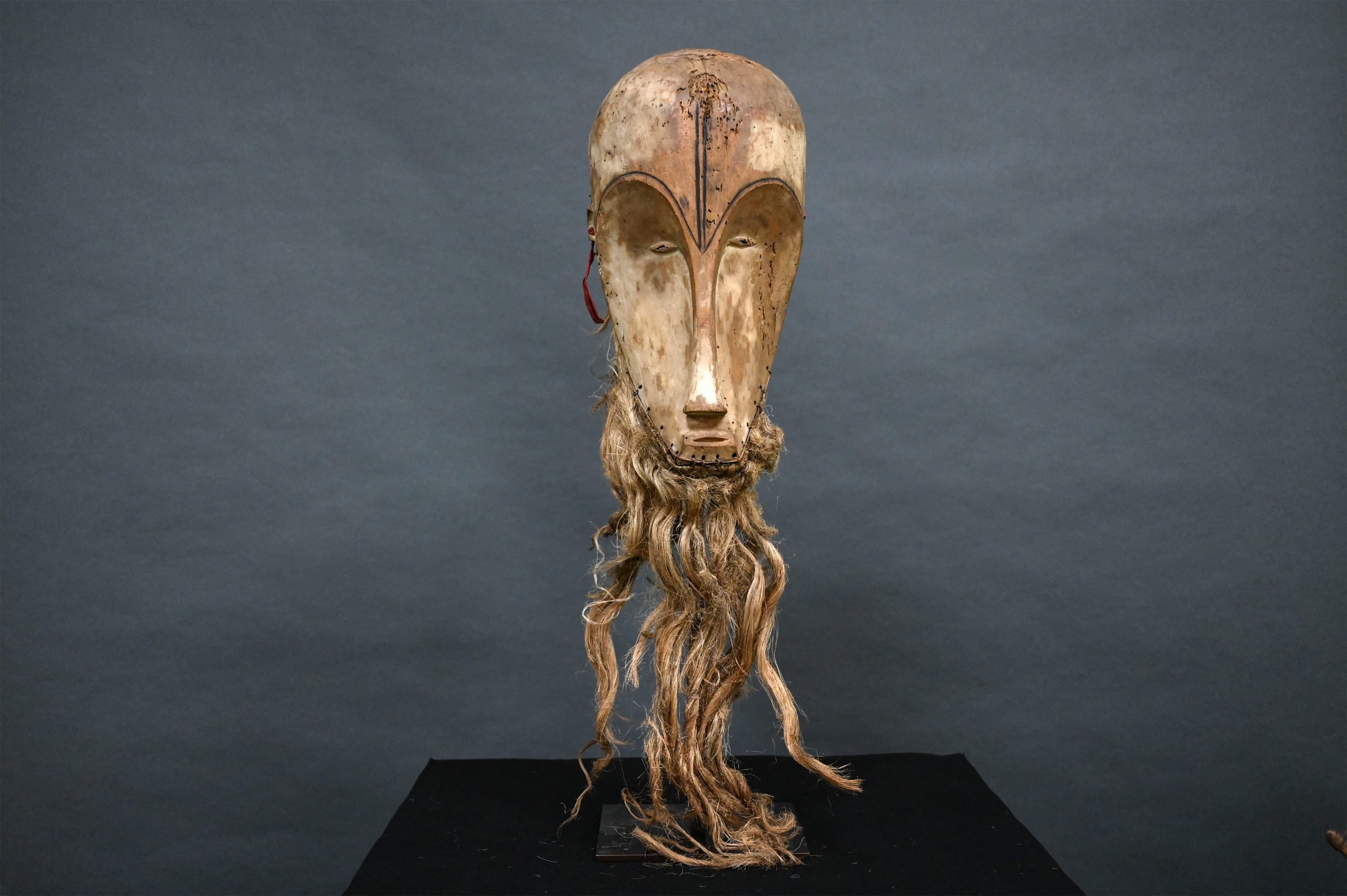Archaeologists in London working against the glare of the Shard, the 72-story modern skyscraper designed by Renzo Piano and opened in 2013, have unearthed the largest Roman mosaic found in the city in more than 50 years.
Researchers from the Museum of London Archaeology (MOLA) uncovered the mosaic panels in the city’s Southwark district while preparing grounds for an extensive redevelopment by U+I , a development arm owned by Landsec, one of the largest real estate developers in the U.K.
The mosaics are believed to date from A.D. 175–225, and likely formed part of a luxurious dining room floor, in keeping with earlier discoveries in the area, which was known as Londinium, or Roman London, according to a press release issued by the company.
“When the first flashes of color started to emerge through the soil everyone on site was very excited,” MOLA site supervisor Antonietta Lerz said in a statement. “This is a once-in-a-lifetime find in London.”
The two mosaic panels are extremely well-preserved, with a square of white tiles enclosing floral and geometric shapes in blue and dark red in a pattern known as guilloche, laid within a large red field.
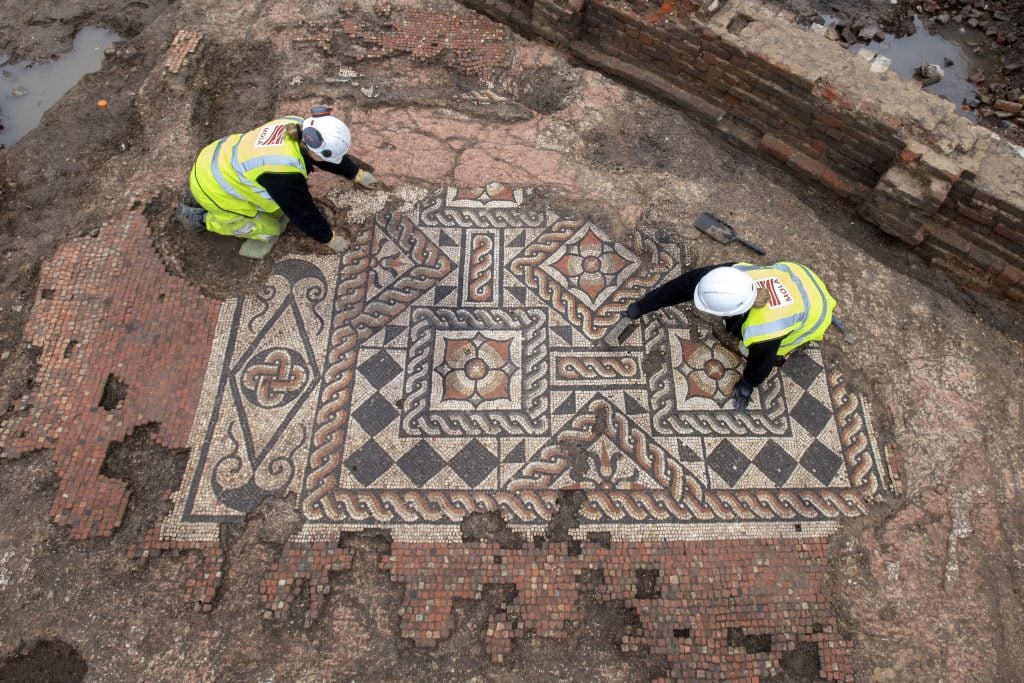
Archaeologists from MOLA at the Liberty of Southwark site. Photo: Andy Chopping and the Museum of London Archaeology.
Archaeologists also identified Solomon’s knot patterns and stylized flowers that are consistent with works made by the Acanthus Group mosaicists, a group named by the archaeologist David Neal for its distinctive handiwork.
A highly similar design was discovered in Germany, and the connection “provides exciting evidence for traveling Roman artisans at work in London,” according to the Landsec press release.
The mosaics were likely set in a large room with dining sofas for visitors. Researchers believe the room could have been in a Roman mansio, or upscale hotel, suggesting, perhaps, the kind of site the company hopes to build. (Landsec is currently planning new residential buildings, shops, and restaurants on the site.)
In earlier excavations, archaeologists found another large building that was likely the private residence of a dignitary or wealthy landowner, based on traces of terrazo-style floors, chipped paint from colorful walls, and remnants of jewelry and bone hairpins.
Follow Artnet News on Facebook:
Want to stay ahead of the art world? Subscribe to our newsletter to get the breaking news, eye-opening interviews, and incisive critical takes that drive the conversation forward.
